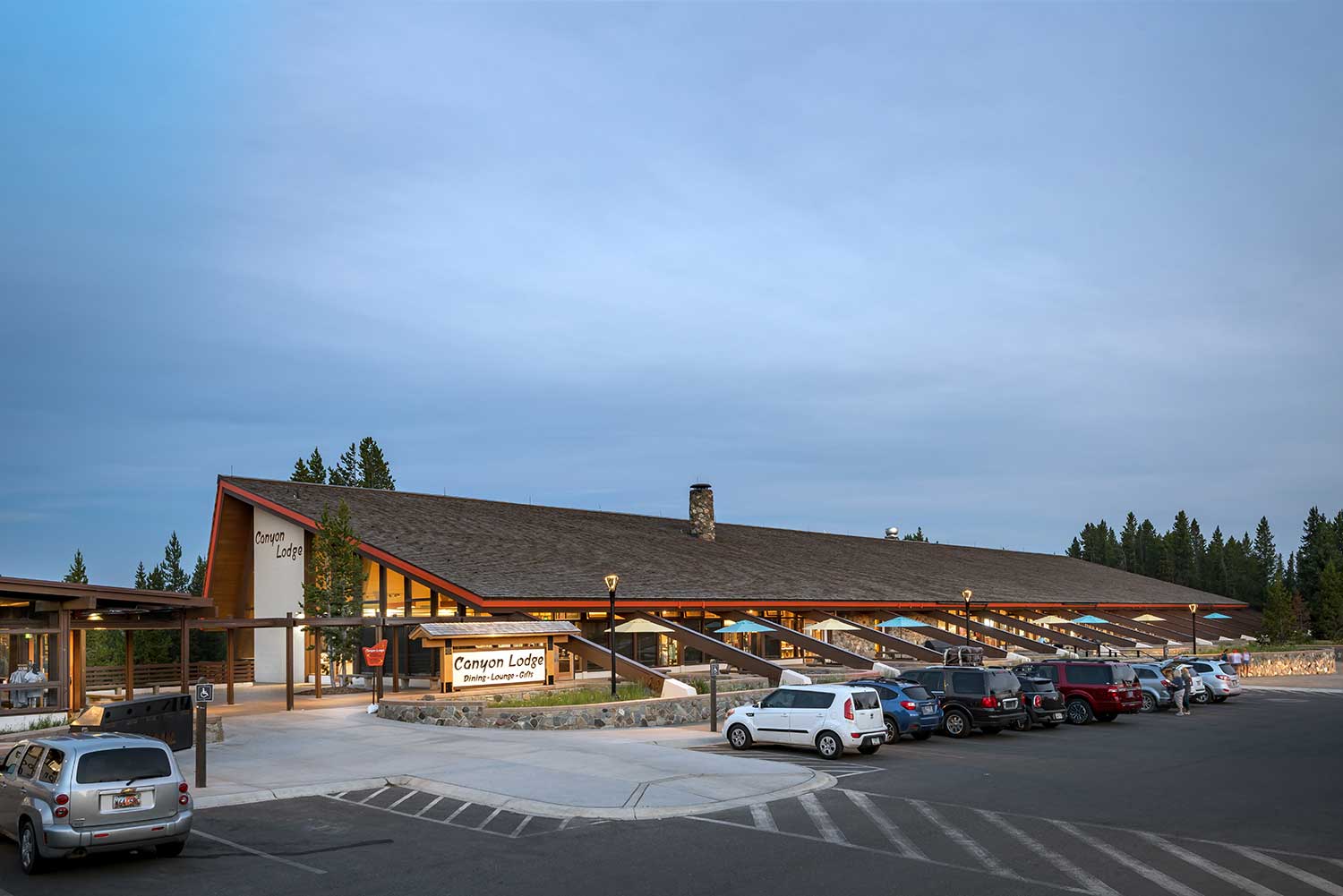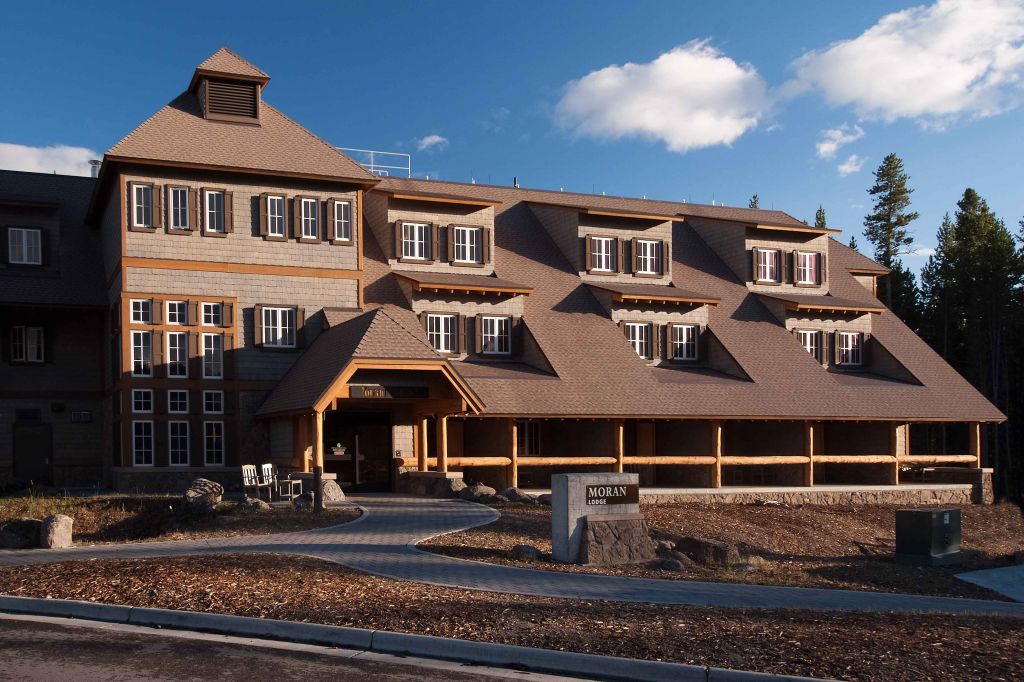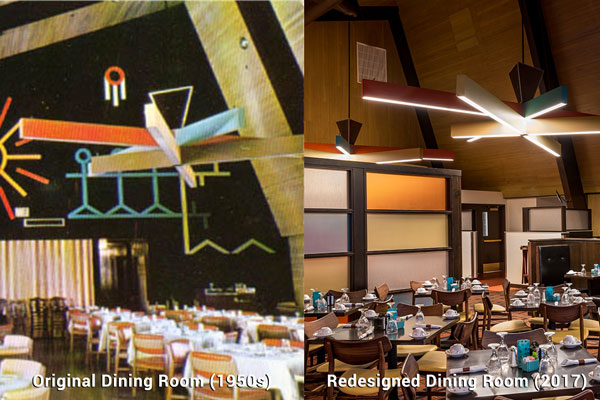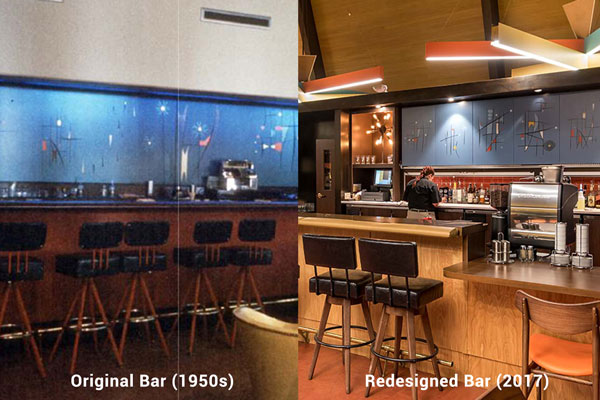The Resurrection of Mission 66 at Canyon
Mission 66
Mission 66 was a heady name for a robust national program initiated by the National Park Service in 1955, in response to the degradation of park units across the country. Funding had been diverted to war efforts – World War II and the Cold War – neglecting the parks’ maintenance and improvement needs. Worn-out buildings and infrastructure greeted the multitudes who started visiting the parks in droves when WWII ended. Yellowstone National Park alone experienced 1.3 million visitors in 1954 and anticipated 1.7 million by 1970. These numbers required more park personnel, better road conditions, and enough pillow counts to accommodate their stays in the park. At the impassioned request of NPS director Conrad Wirth and secretary of the interior Douglas Monday, President Eisenhower amended the national budget to fund these infrastructure improvements in the national parks.

Mission 66 operated from 1956 to 1966 – its completion planned to coincide with the Park Service’s 50th anniversary – and implemented master plans first developed in the 1930s. A large component of the program was protection of the parks’ natural resources.
Canyon Village in Yellowstone National Park was the first Mission 66 project in the nation. NPS selected Yellowstone because it was the first national park and because the two primary concessioners’ contracts were set to expire in 1955. NPS and concessioner Yellowstone Park Company (YPC) negotiated the new 20-year contract over several months, ultimately requiring YPC to take out loans to pay $5.6 million for the new construction at Canyon. National urgency to set the plan in motion and make an example of it gave the Yellowstone Park Company little more than a year to complete and implement the village’s design and open it to the public.
In 1955, the historic Canyon center – lodge, stores, auto camp, etc. – was considered too close to the rim of Yellowstone’s Grand Canyon. The new village was located two miles away from the canyon, with all the amenities located around the parking lot. The largest building was the Canyon Village Lodge, designed like a ski lodge by the world-renowned architecture firm of Welton Becket & Associates. While appreciated for its modern design and food service when first opened, the building was altered over time to accommodate larger numbers of visitors and changing aesthetic preferences. Incrementally, the building became a shadow of its former self.

The big deal is that Xanterra Travel Collection® has renovated Canyon Village Lodge and uncovered its original Mission 66 character. In 2015, Xanterra engaged CTA Architects Engineers to help realize this renovation, with much of the work informed by CTA’s 2013 historic structure report for the building. Work was coordinated with NPS and the Wyoming State Historic Preservation Office, as NPS deems the building significant for its seminal role in Mission 66. The original volume, under the 27’-high ridge beam, and the regularity and warmth of the 92-long glulam beams, reads more clearly now with the removal of partition walls.
New modes of serving fresh food are located throughout the 320-foot long volume. Ice cream, coffee, wine, and beer supplement the full dining room and the exhilarating two-part eatery. The full-service M66 Bar & Grill features a menu of house-made soups, entrée salads, and creatively prepared beef, chicken, pork, Red trout and vegetarian dishesTwo options within The Eatery (Slow Food Fast and Fresh Woks) provide guests with opportunities to customize their meals with fresh sustainable items, featuring local ingredients as available. The original question mark-shaped bar has been restored and enhanced with a facsimile of the original decorative back bar. The chandeliers have been painted their original bright colors, the screen walls are once again translucent, and the furniture is now of the 1950s style and color again. This reinvigoration of the building has been well received by young and old alike. The young are stimulated by the retro-style and the old are comforted by its familiarity.
In addition, there are other options to enjoy a meal while visiting the Canyon area of Yellowstone National Park. Visit the Canyon Lodge Falls Cafe (for those on the run), and The Ice Creamery (featuring house-made waffle cones). Another popular gathering spot is the M66 Lounge. The lounge offers a pleasant locale for a drink, appetizers and fond recollections of the day.


For an in-depth history of Mission 66 read Canyon Village in Yellowstone: The Model for Mission 66. Enriched with original drawings, colored renderings and photographs, this well-researched volume includes the story of the National Park Service’s Mission 66 program and the private firms engaged in the Canyon Village project, as well as some surprises. Architect Lesley M. Gilmore presents the complexities of this historic, ambitious model for the movement that marked the continued evolution of the national parks into the destinations we flock to today.
More information on the book and CTA architects can be found here.
Lesley is an architect at CTA Architects. She is also the author of the book Canyon Village in Yellowstone: The Model for Mission 66.
For more travel experiences to Beautiful Places on Earth™ available from Xanterra Travel Collection® and its affiliated properties, visit xanterra.com/explore.
Want to experience Yellowstone in-depth? See what makes Yellowstone National Park a great place to work for a season or longer!
Explore Yellowstone's History
- Explore Yellowstone's History